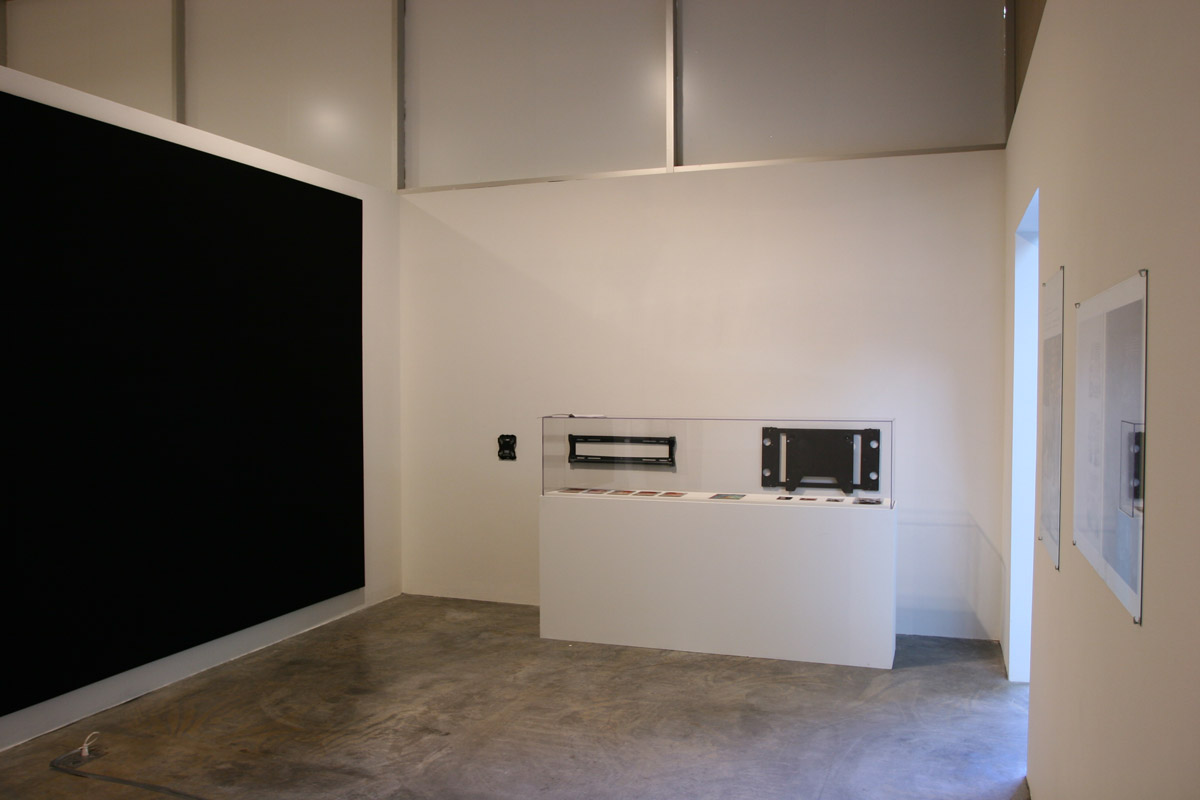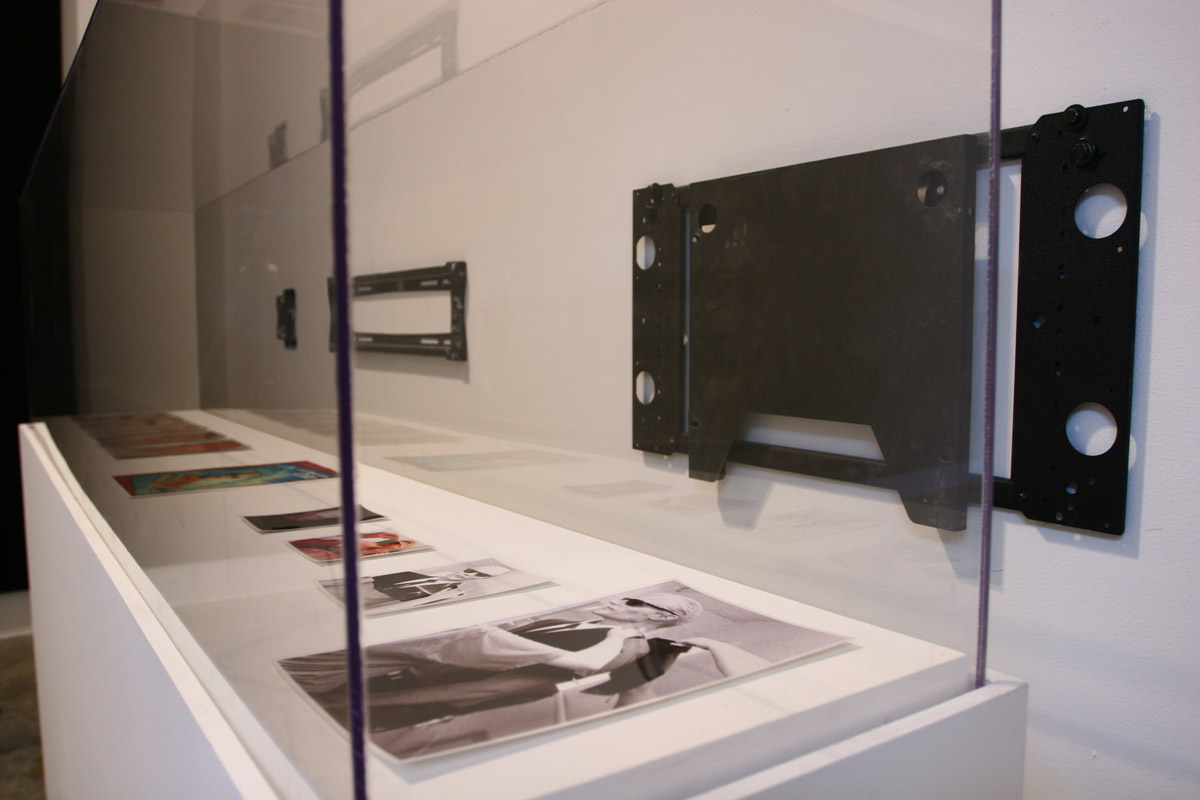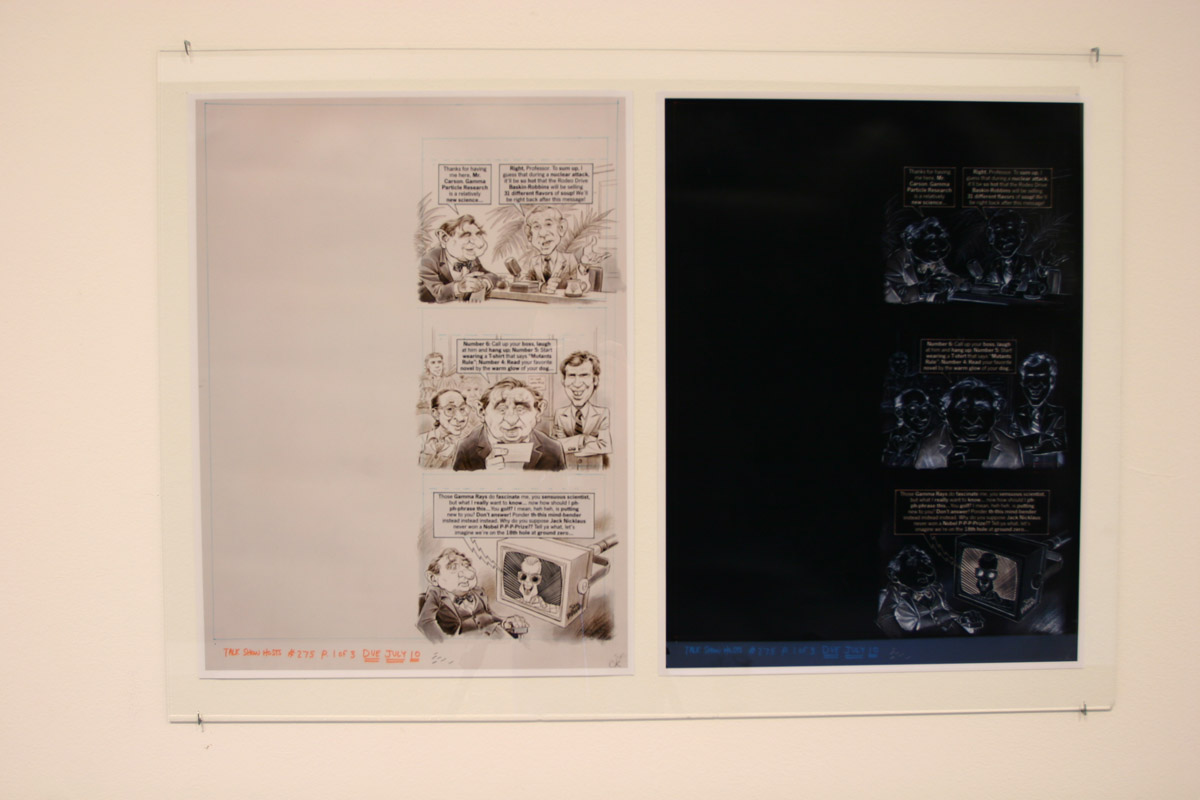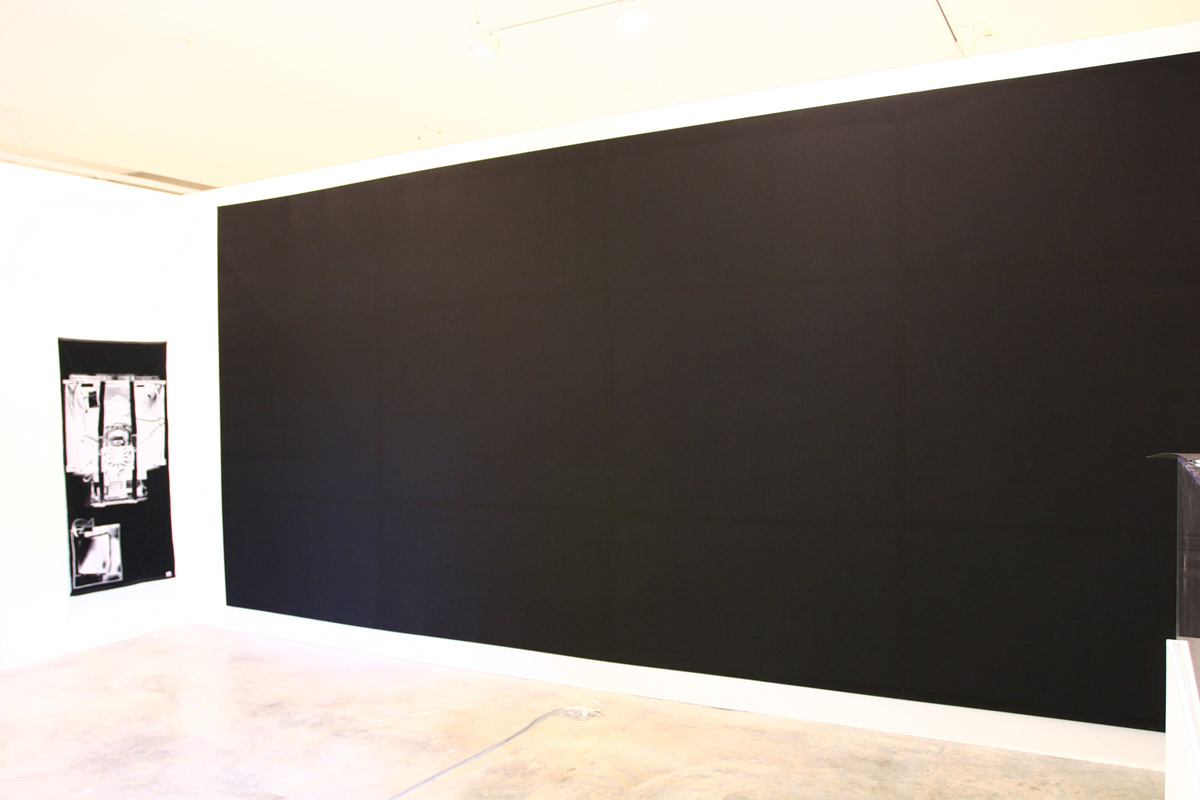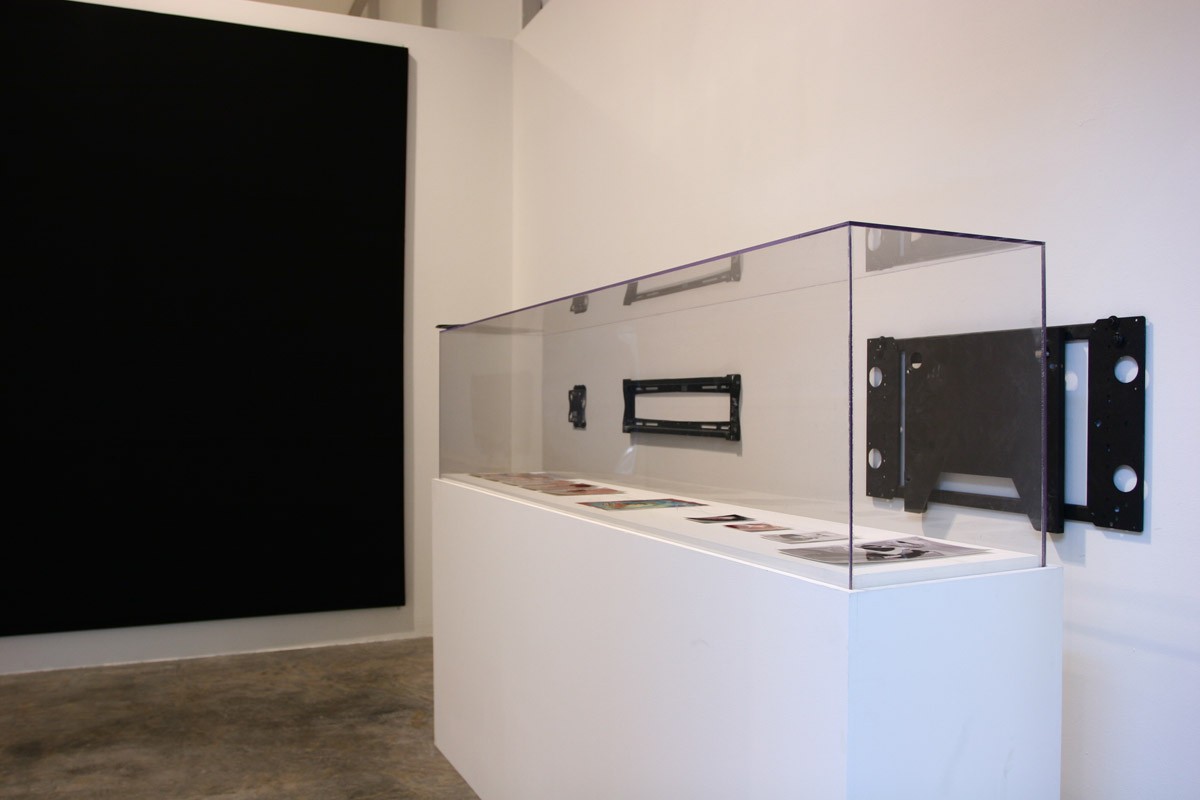Positioning his practice between readymade and promotion, Berlin-based New Zealand artist Simon Denny constructs his sculptural arrangements using a raw and detached method—providing structures for pre-existing cultural products. Recently, Denny has focused his attention on the culture and aesthetics of televisions and the T.V. set, inviting the viewer, through photographs, sculpture, video, and ephemera, to reassess the conditions of video, the modern machine and all-encompassing “multi-media” body.
For his exhibition in The Front Room, Denny presents Negative Headroom: The Broadcast Signal Intrusion Incident (2010). On November 22, 1987, a figure posing as a lo-tech version of the iconic faux-CGI television host Max Headroom interrupted broadcasts on two separate channels in the Chicago area, performing one of the most notorious acts of transmission piracy to date. With a new series of works—a large scale canvas, a selection of broadcast archive material, custom produced towels, photos and documents—Denny’s exhibition romanticizes this landmark event in the history of hacking, whose author is still unknown 23 years later. Here, piracy is channeled through the perversion of Max Headroom’s assimilation as a flexible promotional figure—a figure at once embodying critique (in the “critical” television series) and endorsement (as the “face” of New-Coke). For Denny, revisiting this event also highlights the T.V., recognizing it as the essential infrastructure determining our current networked society. From iPads, mobile phones and other displays at the sides of their roaming viewers, television is now stereotyped somewhere between cultural-critical defamation and educational fantasies—revealing itself as a changeable, multiple, fragmented and contradictory medium
